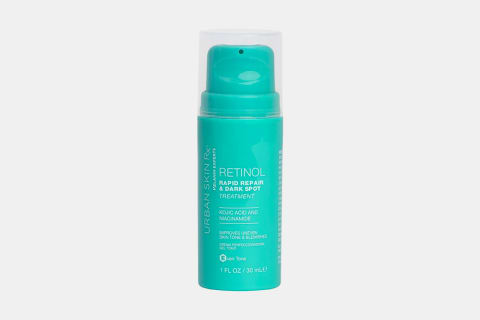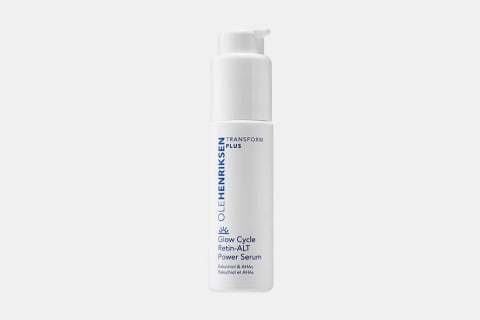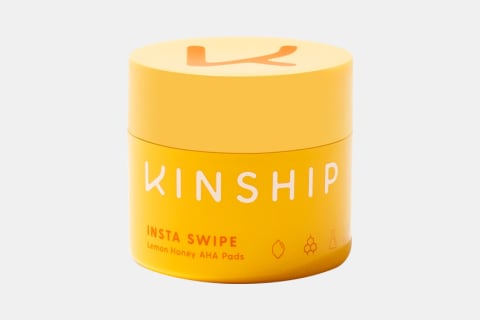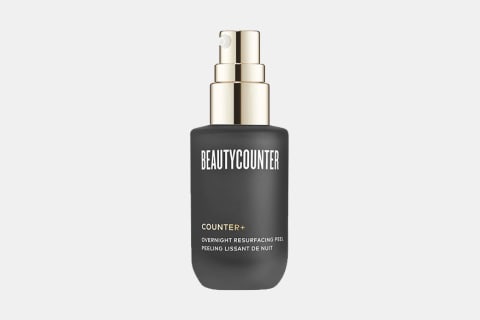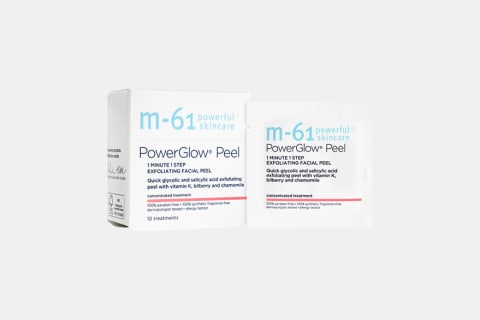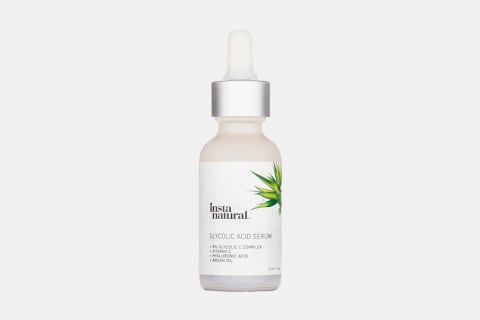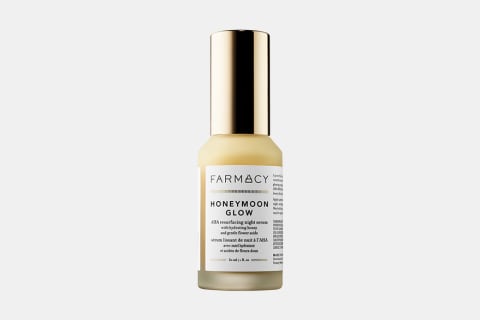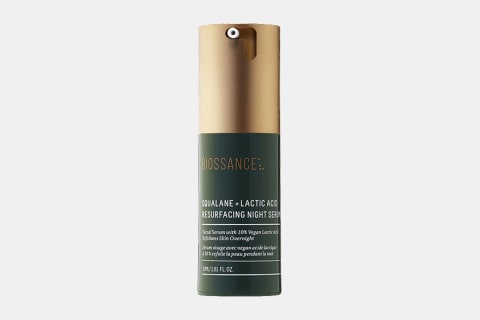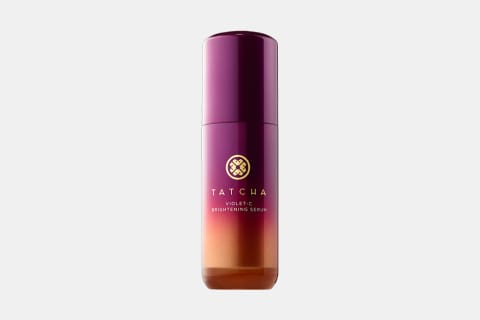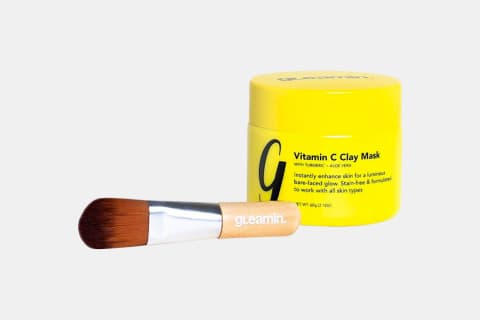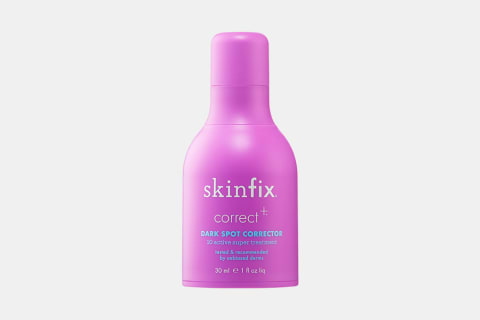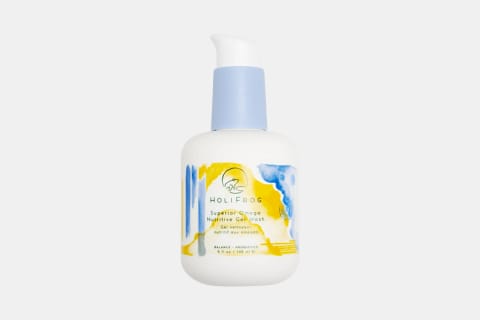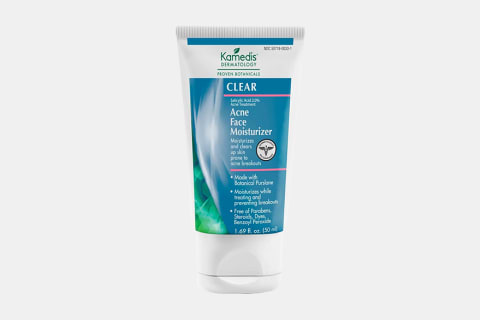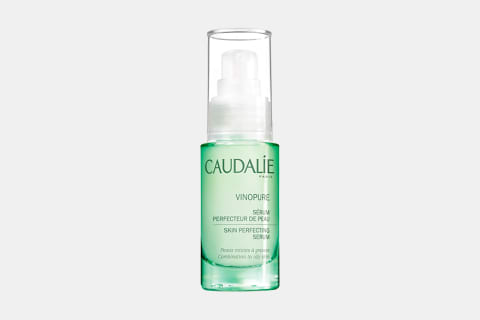How To Get Rid Of Acne Scars, From Dermatologists


Acne is hard enough in the moment—not only is it tricky to heal, but we know it can affect our mental health, too. Even if you're one of the lucky ones to grow out of it (adult acne is very much real!), there's a chance you might develop scarring. And scarring, unfortunately, can be lifelong.
Like any scar tissue, acne scars are complicated to treat1. Research shows that the most effective protocols involve multiple, complementary modalities2. So here's our best, most effective suggestions.
How acne scars form and why they are so hard to treat.
Acne scars are the result of inflamed blemishes3 on the skin, according to the American Society of Dermatological Surgery. When pores clog and swell from trapped sebum, dirt, and bacteria, it can rupture the pore's walls—both near the surface and in the dermis. The skin then goes into repair mode by producing new collagen fibers, but unfortunately, these are often not as smooth and uniform as the original skin, so they stick out and are more apparent. And these new fibers are often more rigid and thus hard to slough off.
It's estimated that 95%4 of the patients with acne vulgaris develop scarring of some kind. How the resulting scar tissue looks can actually vary quite a bit (which you'll learn below), and patients can have multiple types on the skin, even within the same area. There's also no indication of what type of scarring a person might develop. "Different people heal differently and are prone to different types of scarring. Some will be more prone to the ice pick versus rolling scars," says board-certified dermatologist Jeremy Fenton, M.D., at Schweiger Dermatology Group in New York City. "One person may get no scarring, while another gets severe scars from a similar severity of acne."
Types of acne scars
We'll get into the details more in depth below, but as an overview here are the types of acne scars & post-inflammatory hyperpigmentation you may expect post pimple.
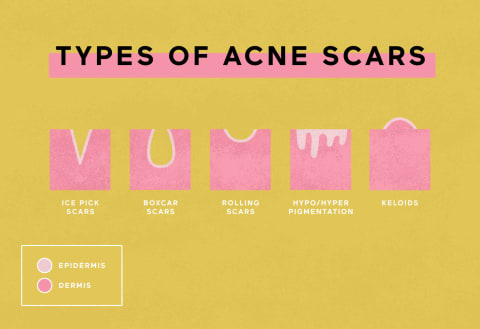
Ice pick scars
Ice pick scars are a form of atrophic scar, which means it's indented rather than raised. (Research shows that 80 to 90% of people5 with acne scars have indented.) Of the atrophic scars, ice picks are the hardest to treat. These look like small, narrow pinholes in the skin, with steep fall-offs. ("They are named 'ice pick' scars because they look like an ice pick was used on the skin," says Fenton.) They're also very deep, often diving into the lower levels of the dermis and are most often formed by cystic acne, or acne that forms in the lower levels of the skin.
How can you treat ice pick scars?
As noted above, these are incredibly hard to treat. In some cases, you can never fully "fix" the scars, due to the depth of the injury. These will need a trip to the dermatologist's office for a professional consultation, with typical suggested treatments1 that range from filler, fractional lasers, and chemical peels to punch excision, or a form of surgery that cuts out the scar tissue and stitches the skin back together. Because of the depth of the scars, topical and natural remedies can't rid the skin of them, but they may help overall appearance. Consider stronger actives, such as retinols as they accelerate cell turnover.
Boxcar scars
Another form of atrophic scarring, boxcars look like small oval, circular, rectangular, or square pits. They often have steep drop-offs into a U-shaped scar. These are unlike ice pick scars in that they are wider and don't usually go deep into the dermis. Because they are more shallow, they also are easier to treat.
How can you treat boxcar scars?
Boxcar scars respond to fractional laser therapy6, which is an in-office treatment in which a dermatologist removes layers of your skin with a special laser. (As you may imagine, it can be painful and requires downtime, however.) Additional treatments include7 professional microneedling (we don't recommend trying it yourself—too much risk associated with it) and platelet-rich plasma injections. If these all sound far too intense, we understand. They also respond to chemical peels—like glycolic, which is generally tolerable for most patients—if done regularly.
As for at-home treatments, consider natural acids of your own: AHA or BHA acid treatments and peels can help exfoliate the top layer of skin. Also consider a retinol here, too.
Rolling scars
Rolling scars are another form of atrophic scarring. They are characterized by wavelike, undulating skin. These are the result of long-term, chronic acne—as the repeated inflammation and trauma to the skin creates uneven scar tissue. In many cases, the appearance is shallow and perhaps not very noticeable. With time, however, rolling acne tends to exacerbate as the skin naturally starts to sag.
How can you treat rolling scars?
As far as treatments go, you can consider rolling and boxcar sister scars—so what was mentioned above can be applied here (the natural, at-home acids and retinol included!). And, notes Fenton, rolling tend to be the most receptive to treatment in general: "These have a better response to various treatments compared to other scars." Studies have also shown8 that rolling scars do respond well to microneedling, a treatment in which a doctor rolls a device on the face creating tiny injuries to spur collagen production. You'll likely have to do a few sessions, and results take about six weeks to three months, with full results taking about a year.
At home, you can also use a glycolic or lactic acid serum or cream nightly. These acids gently buffer off the top layers of skin as well as promote healthy collagen production so you can help smooth out the uneven skin.
Hypo- or hyperpigmentation
These aren't technically a scar in the same way the above are, but they usually fall under this umbrella when discussing acne. According to the most widely accepted standard grading scale of acne9, pigmentation issues are considered "macular," or the most mild form. These are surface-level stains where the pigment of the skin is altered due to inflammation10—essentially when skin is inflamed, it can trigger or halt pigment production. Hyperpigmentation on pale skin tones often appears red or pink, while darker skin tones usually appear brown or black. "The pigment then sits there until the body clears it out or it is exfoliated off," says Fenton. Hypopigmentation appears lighter than the rest of the skin.
How can you treat these marks?
In some circumstances these marks are permanent, but most will fade within six months to two years. You can usually speed up the fading process with the right topical ingredients. Look for things labeled "brightening" or "spot corrector" or that have potent antioxidants like vitamin C.
Keloids
Now, on the other hand, keloids are hypertrophic scars11, which means that instead of a depletion in the skin, there's an excess of scar tissue. These form as the result of acne as well as just general injuries. These appear more frequently from body acne.
How can you treat keloids?
Keloids take dermatologic intervention, and there's not much you can do on your own. Also: If you develop them once, it likely means you are at risk at developing them again12.
Ingredients to look for:
While it's important to take a target approach to your acne and scars, here's a good generalized list of actives that can encourage cell turnover, exfoliate, brighten, and improve the appearance of the skin.
- Retinol. This is a compound derived from vitamin A, an essential micronutrient. (Vitamin A isn't naturally synthesized by the body, so it needs to be supplied.) It's available over-the-counter (OTC) at low strengths. Retinol falls under the umbrella term "retinoids," which includes all vitamin A derivatives—both OTC and prescription. But sometimes, "retinol" is used for vitamin A itself, or it's used interchangeably with "retinoid." It's a beloved ingredient thanks to the fact that it promotes collagen production, speeds up cell turnover, increases dermal density, controls oil production, and improves texture.
- Glycolic acid. This chemical exfoliant is an alpha-hydroxy acid—the family of water-loving acids that works on the surface of the skin. Naturally derived from sugar cane, glycolic acid "dissolves the bonds that hold dull, dead skin cells on the surface of the skin so the skin will gently shed," according to board-certified dermatologist Hadley King, M.D. Basically, glycolic acid (and all AHAs, for that matter) loosen dead skin cells that sit on the topmost layer of the skin, paving the way for soft, smooth skin underneath. It has the smallest molecular weight of all the alpha-hydroxy acids, which means it can penetrate the outer layer quite easily and is more potent.
- Salicylic acid. Salicylic acid comes from the beta-hydroxy acid (BHA) family. In case you need a refresher on BHAs, these acids are oil-soluble, meaning they can penetrate deep into your pores and unclog them at the source. "BHAs also have anti-inflammatory, skin-calming properties, so they are gentle enough even for sensitive skin prone to redness and/or rosacea," notes King.
- Lactic acid. Lactic acid is an AHA that very gently sloughs off dead skin cells. The acid is actually derived from milk (however, you can find vegan options) and is found in professional peels or infused in over-the-counter skin care products including serums, cleansers, creams, and treatments. lactic acid has one of the larger molecules in the group, which means it can't penetrate as deeply as others. This means all of the hard work of the acid happens on the surface of the skin, which decreases the amount of irritation and helps to protect the skin barrier.
- Antioxidants. Anyone can benefit from antioxidants, as they help temper inflammation and fight free radical damage—both of which contribute to scarring. There are many types that can benefit those with acne, including niacinamide, green tea, and vitamin E.
A note on prevention.
The best acne scar treatment is preventing them from forming in the first place. So be smart with your acne care. The first rule is don't pick at existing acne. Picking at pimples only further damages the surrounding tissue, can prolong a lesion, and can encourage more breakouts, starting the cycle all over again.
As for topicals, we recommend taking a two-pronged approach. First, you stop breakouts from forming by using salicylic acid. This oil-soluble acid is incredibly effective at shimming down into pores, dissolving excess oil, and removing buildup13. And when you do get a pimple (because let's face it: It happens, people), be sure to soothe inflammation, too. Since scars are the result of damaging inflammation, anyone suffering from acne could benefit from a topical anti-inflammatory14.
The take-away.
Just remember, acne scars are incredibly common, and you're likely your harshest critic. Just stick to a regular skin care plan that works for you—as healthy skin will just improve the appearance of skin quality overall.

Alexandra Engler is the beauty director at mindbodygreen and host of the beauty podcast Clean Beauty School. Previously, she's held beauty roles at Harper's Bazaar, Marie Claire, SELF, and Cosmopolitan; her byline has appeared in Esquire, Sports Illustrated, and Allure.com. In her current role, she covers all the latest trends in the clean and natural beauty space, as well as lifestyle topics, such as travel. She received her journalism degree from Marquette University, graduating first in the department. She lives in Brooklyn, New York.
14 Sources
- https://www.ncbi.nlm.nih.gov/pmc/articles/PMC4445894/
- https://www.ncbi.nlm.nih.gov/pubmed/27128240
- https://www.ncbi.nlm.nih.gov/pubmed/16202600/
- https://www.ncbi.nlm.nih.gov/pubmed/31531167
- https://www.ncbi.nlm.nih.gov/pubmed/11423843/
- https://www.ncbi.nlm.nih.gov/pubmed/24447255/
- https://www.ncbi.nlm.nih.gov/pubmed/30924301
- https://www.ncbi.nlm.nih.gov/pubmed/19486041
- https://www.ncbi.nlm.nih.gov/pubmed/17199653/
- https://www.jaad.org/article/S0190-9622(17)30128-7/abstract
- https://www.ncbi.nlm.nih.gov/pubmed/19215252/
- https://www.ncbi.nlm.nih.gov/pmc/articles/PMC5372622/
- https://www.ncbi.nlm.nih.gov/pmc/articles/PMC4554394/
- https://www.ncbi.nlm.nih.gov/pubmed/14746619/

